Japanese dashi plays a fundamental role to supplement the umami flavour of any Japanese dishes. By combining two dashi makes the umami flavour bolder and more dramatic. And that’s what Awase dashi does because Awase means to combine. So let’s learn how to make Awase Dashi at home.
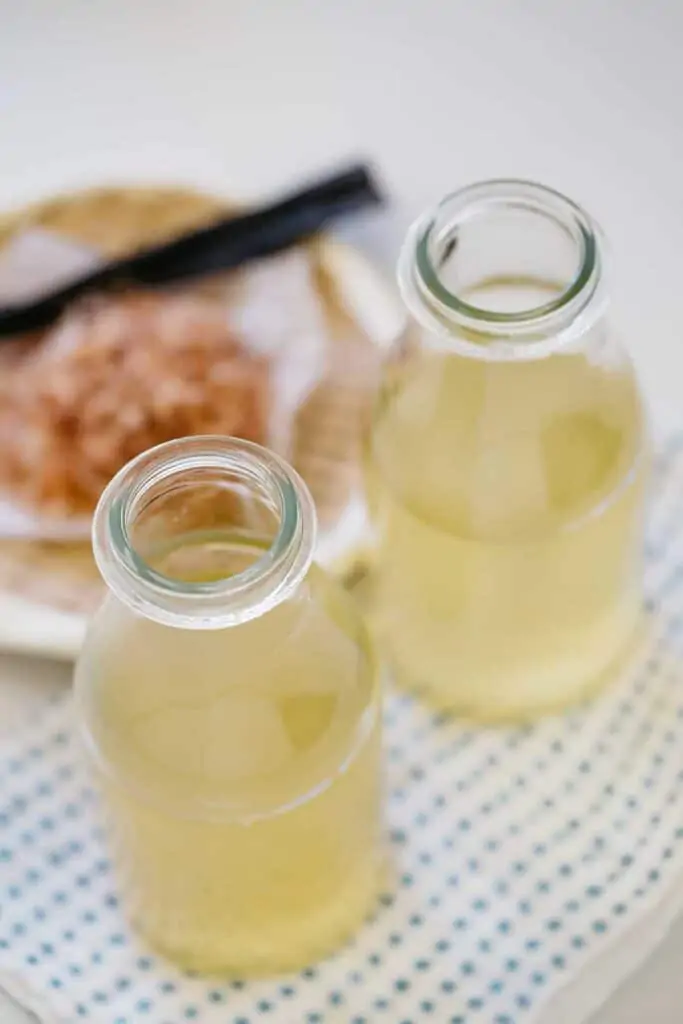
What is Awase Dashi?
Awase means to combine in Japanese. So Awase dashi is simply the combination of two or more dashi; Katsuo (bonito), Kombu (kelp), Niboshi/Iriko (dried infant anchovies) and dried Shiitake mushrooms can be combined. Commonly Japanese use Katsuo(bonito) and Kombu(kelp) to make Awase dashi. When those two dashis are combined, umami synergies dramatically increase.
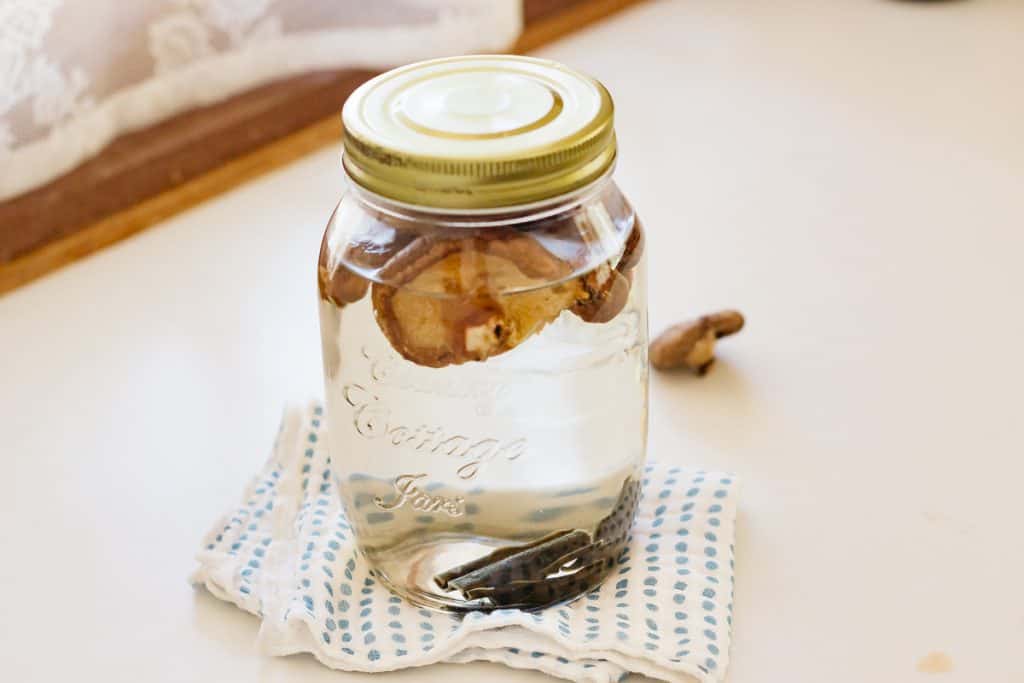
Ichiban Dashi & Niban Dashi
By using the same ingredients of dashi twice makes two types of Dashi. Japanese call them “Ichiban-dashi” and “Niban-dashi”. The first dashi made from the ingredients is “Ichiban” because Ichiban means the first. And the dashi made from the same ingredients used for making Ichiban dashi is called “Niban dashi”. Why? Because you guessed it, Niban means the second.
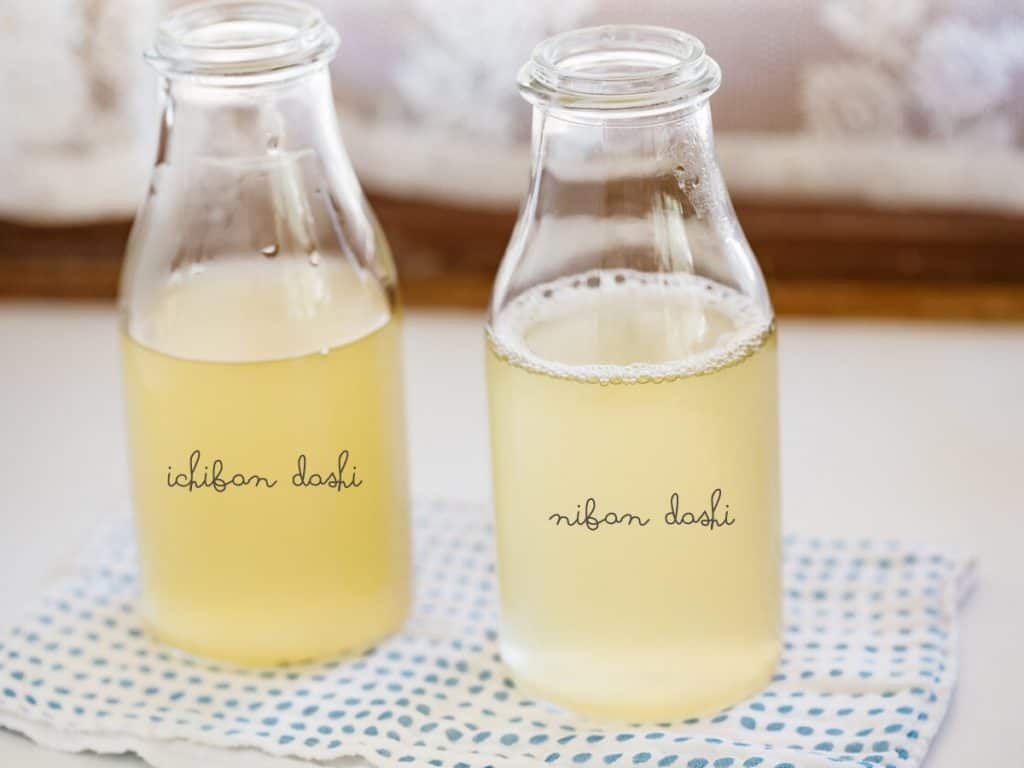
Ichiban Dashi
Ichiban Dashi is packed with umami flavour. When it is made successfully, it should look like clear soup stock with a bold flavor. It is, therefore, suitable to make dishes such as Suimono (clear soup) and Chwanmushi.

Niban Dashi
Niban dashi is made from the previously used ingredients for making Ichiban dashi with extra bonito flakes. It is used for making Japanese dishes such as simmered vegetables which flavor can be enhanced by other seasonings such as soy sauce and miso. You could also combine 1:1 ratio of Ichiban and Niban dashi to make all-purpose dashi.
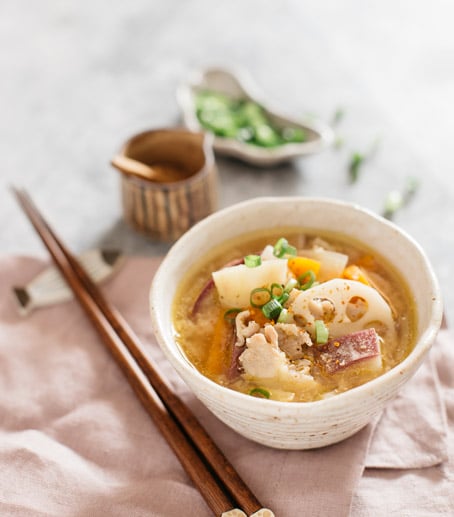
So What’s the Big Idea of Making Dashi Twice From the Same Ingredients?
First of all, the ingredients that we use for making dashi is not cheap to get when you live outside of Japan. So if we threw them away (we don’t though) after the ingredients are only used once is quite wasteful. Japanese people would say it “Mottainai”. Secondly, the ingredients used for making Ichiban dashi still contain umami flavour to extract by adding a little bit of Katsuo bonito flakes. Clever, right!
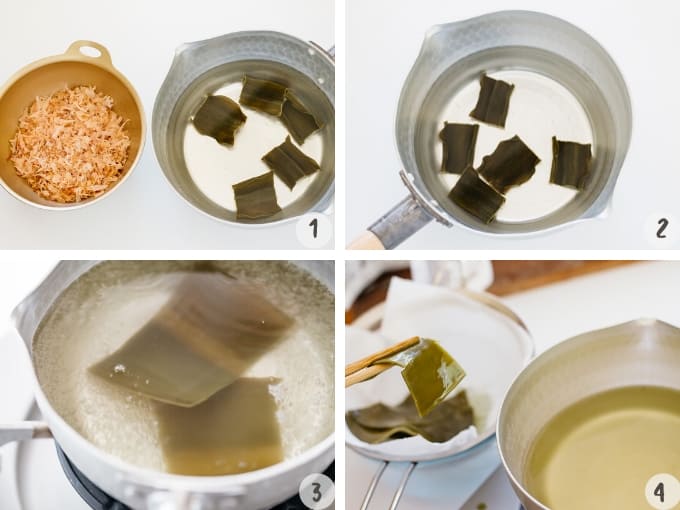
Dashi Combination
You can combine any of the dashi that I have written about in previous posts: Katsuo dashi, Kombu dashi, Niboshi dashi, and Shiitake dashi. I usually make dashi stock with the following ratio. 100 (water) : 3 (ingredients). So when those ingredients are combined, I use 100 water : 1.5 of one ingredient + 1.5 of other ingredient. ( The other ingredients combined will always be 3% of the water used )
- Katsuo (bonito flakes) + Kombu (dried kelp) Photo 1-8
- Katsuo (bonito flakes) + Niboshi/Iriko (dried infant anchovies)
- Kombu (dried kelp) + Shiitake (dried shiitake mushrooms)
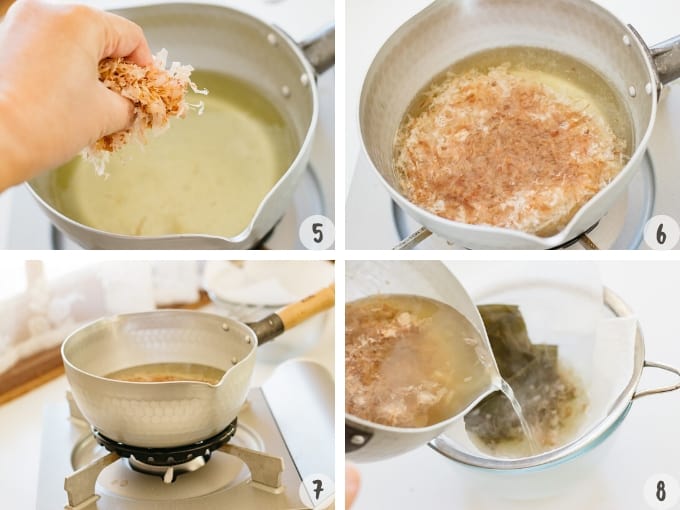
Tips to Make Awase Dashi Successfully
You have to remember the following tips to make each dashi successfully. Because these key tips also apply when making Awase Dashi.
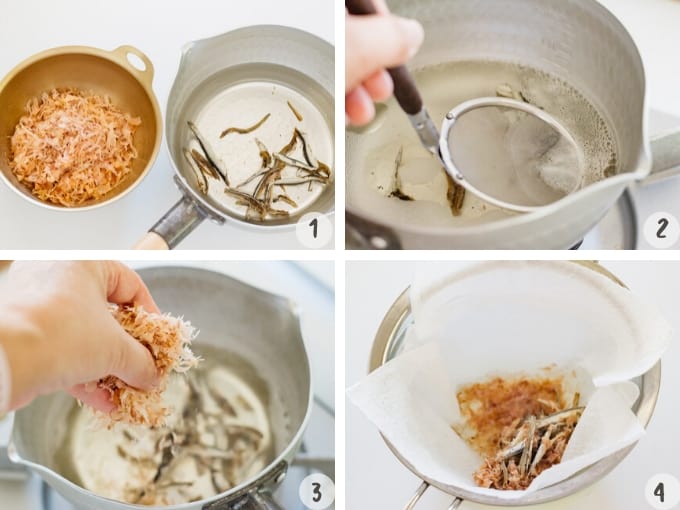
- Katsuo dashi – When you see the small bubbles in the saucepan, turn the heat off and add bonito flakes and wait patiently until all bonito flakes sink naturally to the bottom of the saucepan. 85°C
- Kombu dashi – Remove Kombu kelp when you see tiny bubbles starting to form around the Kombu pieces. 60°C
- Niboshi Dashi – Remove heads and entrails because those parts have an astringent taste.
- Shiitake Dashi – extract shiitake umami flavour by soaking COLD water slowly overnight in the fridge.
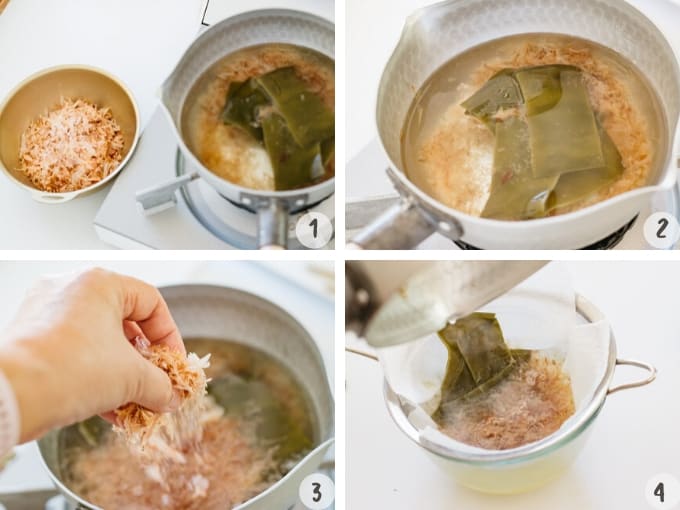
Delicious Japanese Recipes Using Awase Dashi
The following Japanese recipes are good for using Awase dashi
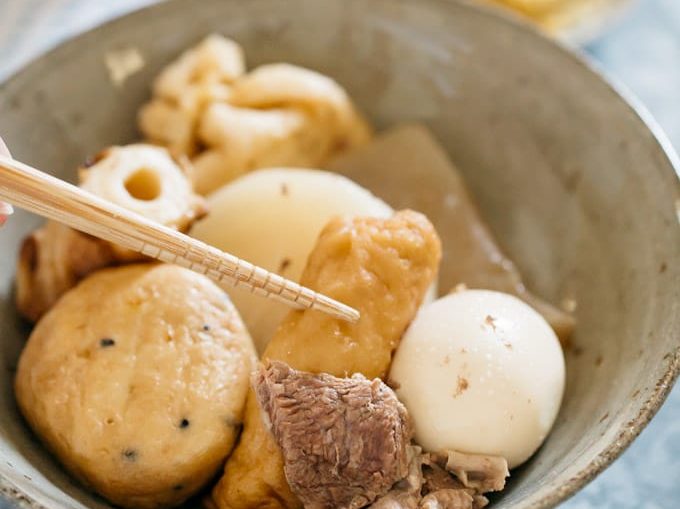
FAQ
Q: Is there any way to make Awase dashi quicker?
A: Yes, although making dashi from scratch is worthwhile for your effort, I understand some people are busy and need a short cut. There is instant Awase Dashi Powder available from Japanese or Asian grocery stores or online shops.

Q: What to do with leftover ingredients?
A: You can make Furikake, Kombu tsukudani, and Niboshi tsukudani and Mushrooms can be used as ingredients of Takikomi gohan and filling for Sushi rolls and miso soup, Okara, and Scrambled Tofu.
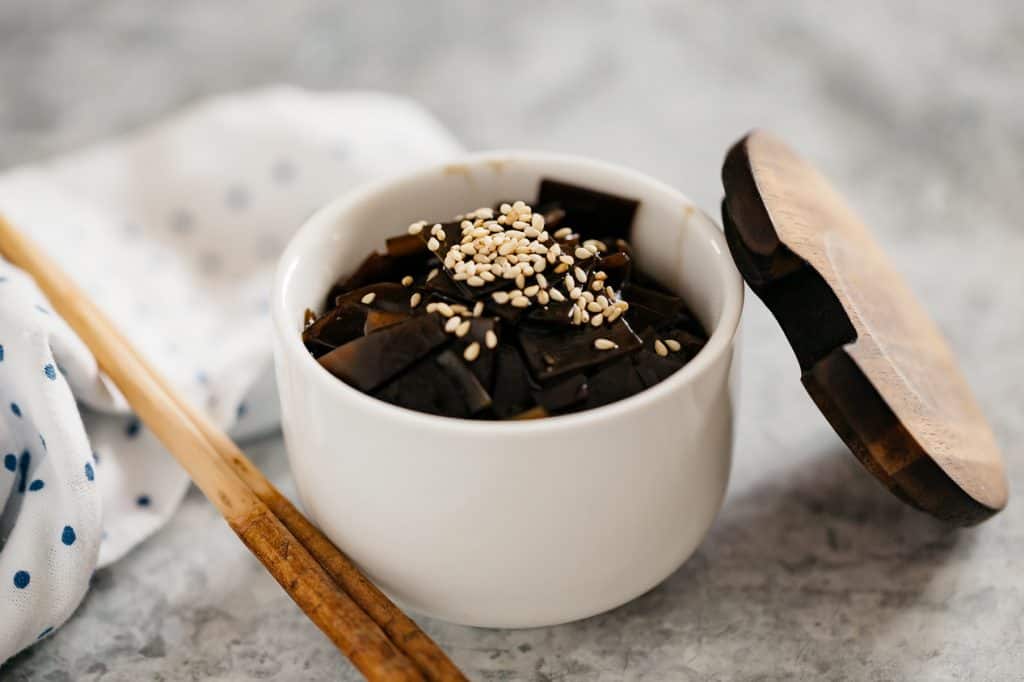
See The Complete Dashi Guide
Dashi plays a fundamental role in Japanese cuisine. It ultimately determines the overall taste of the Japanese dishes. Mastering Dashi makes cooking Japanese food more fun and definitely more flavourful! Learn how to prepare 5 different dashi broth .
- Katsuo (bonito flake) Dashi
- Kombu (dried Kelp) Dashi
- Niboshi (dried infant anchovies/sardine) Dashi
- Shiitake (dried shiitake mushrooms) Dashi
- Awase (combined) Dashi
Stay Connected
If you made Awase dashi and liked the recipe, please leave a comment below and rate the recipe.
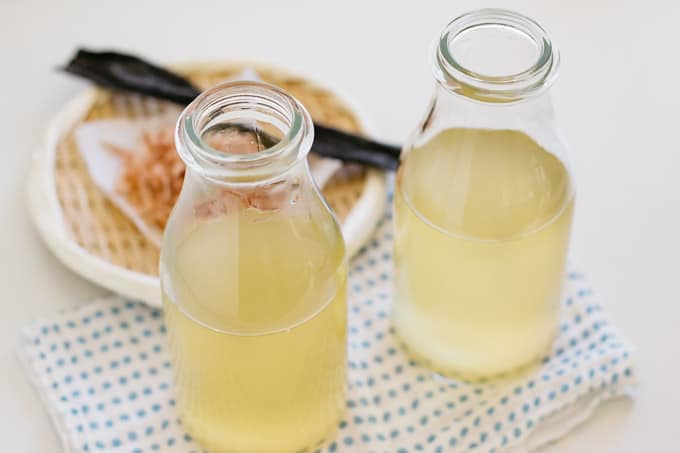
If you like the recipe please rate the recipe and leave comments below. Also don’t forget to follow me on Youtube, Pinterest, Facebook, Twitter and Instagram. This way you keep up to date with all the latest happenings on Chopstick Chronicles. Don’t forget to Sign up for a weekly newsletter so you never miss out on new authentic delicious Japanese recipes! Sign up form is on the right-hand sidebar.

Awase Dashi
Ingredients
Katsuo (Bonito) + Kombu (Kelp) Ichi (1)ban Dashi
- 0.5oz/15g Dried Kombu Kelp
- 0.5oz/15g Katsuo Bonito Flakes
- 4cups/1liter Water
Katsuo (Bonito) + Kombu (Kelp) Ni ban (2) Dashi
- 1 The ingredients used to make Ichiban dashi
- 1 cup Katsuo Bonito Flakes
- 4cups/1liter Water
Katsuo (Bonito) + Niboshi ( Dried sardine)
- 0.5oz/15g Niboshi dried infant anchovies
- 05oz/15g Katsuo Bonito flakes
- 4cups/1liter Water
Kombu (Kelp) + Dried Shiitake Mushrooms
- 0.5oz/15g Drid Kombu Kelp
- 5 Dried Shiitake Mushrooms
- 4cups/1liter Water
Instructions
Katsuo (Bonito) + Kombu (Kelp) Ichi (1)ban Dashi
- Clean the kelp with a well wrung out damp cloth, place the kelp in a container with water and let it stand overnight in fridge. *1
- Transfer the kelp and water into a saucepan.
- Heat it over medium heat and when the tiny bubbles form remove the kelp pieces out of the saucepan. *2
- Turn the heat up little higher and when small bubbles start rise up to the surface, add Katsuo bonito flakes and turn the heat off. *3
- Wait for a few minutes or for the bonito flakes sink to the bottom of the saucepan.
- Strain the dashi into a large bowl with a sieve lined with a kitchen paper towel. *4
- Squeeze the dashi stock gently through the kitchen paper towel.
- Use it for cooking or store in the fridge. *5
Katsuo (Bonito) + Kombu (Kelp) Ni ban (2) Dashi
- Place the ingredients leftovers from the Ichiban dashi and water into a saucepan.
- Heat it over medium heat.
- Turn the heat off just before it boils, and add the extra Tatsuo bonito flakes into the saucepan. *3
- Wait for a few minutes or for the bonito flakes to sink to the bottom of the saucepan.
- Strain the dashi into a large bowl with a sieve lined with a kitchen paper towel. *4
- Squeeze the dashi stock gently through the kitchen paper towel.
- Use it for cooking or store in the fridge. *5
Katsuo (Bonito) + Niboshi ( Dried sardine)
- Pluck off heads and remove entails of the dried baby anchovies.
- Place the prepared dried anchovies in a small saucepan over low-medium heat to dry roast them for a few minutes without using any oil.
- Fill a container with cold water and add the dry roasted infant anchovies.
- Let it stand overnight. *1
- Place the steeped anchovies and water in a saucepan over medium heat and bring it to the boil.
- When the stock boils, turn the heat down to low and simmer it for 3-5 minutes.
- Remove any scum off the surface as often as it necessary.
- Turn the heat off and add Katsuo bonito flakes into the saucepan.
- Wait for a few minutes or for the bonito flakes to sink to the bottom of the saucepan.
- Line a sieve with a sheet of kitchen paper towel and place it over a large bowl. *4
- Use the dashi stock for cooking or store in the fridge. *5
Kombu (Kelp) + Dried Shiitake Mushrooms
- Clean the kelp and mushrooms with a well wrung out damp cloth.
- Fill a container with the kelp, mushrooms and cold water.
- Let it stand overnight in fridge.
- Remove the kelp and shiitake mushrooms next morning. *4
- Use the dashi stock for cooking or store in the fridge. *5
Notes
Nutrition
Chopstick Chronicles is a participant in the Amazon Services LLC Associates Program, an affiliate advertising program designed to provide a means for sites to earn advertising fees by advertising and linking to Amazon.com. As an amazon associate I earn from qualifying purchases.

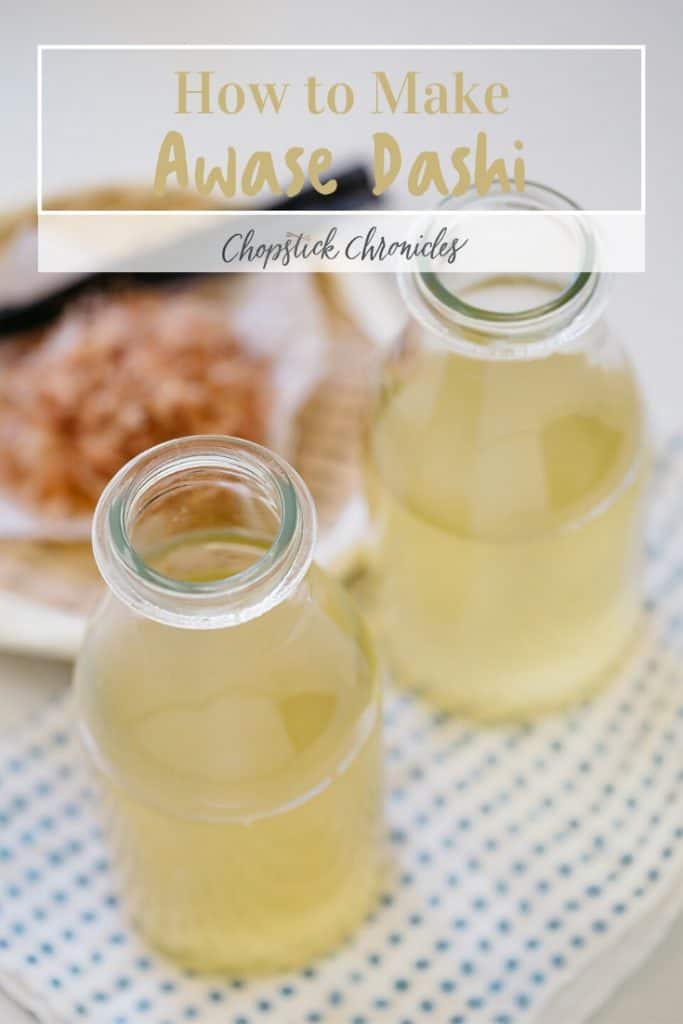
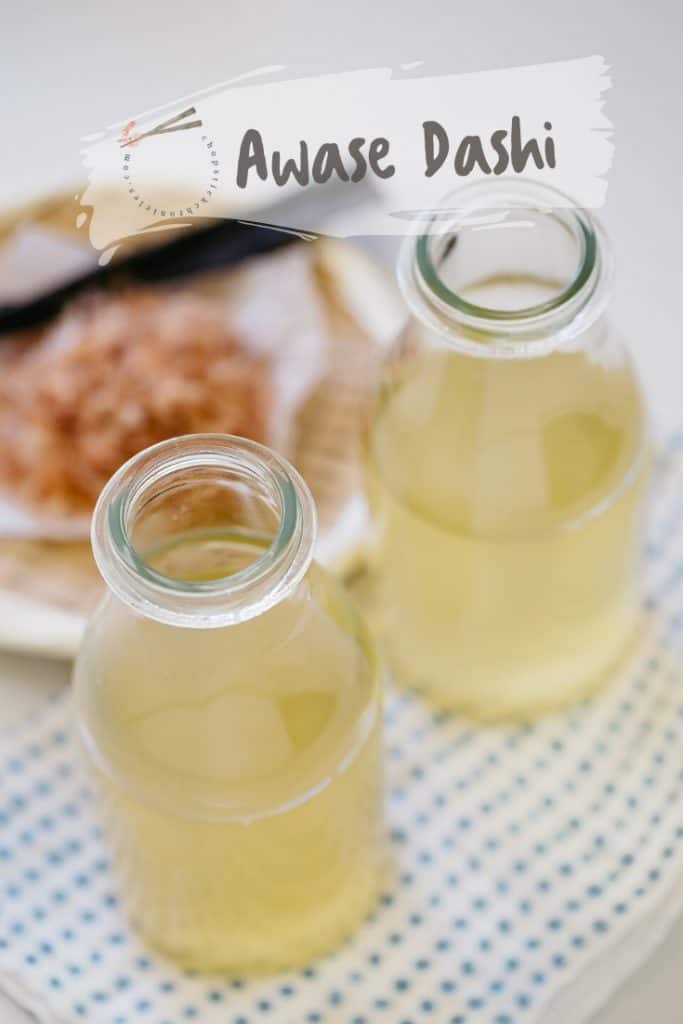
Hello and thank you very much for all the information and clarification to make a good Dashi home. I learned a lot from you! I fell in love with Japanese cuisine and its subtleties through your beautiful literature. I am French and I live in Canada
Oh Thank you Maryline 😀 Canada is the country I would love to visit one day.
Yes, 50 years have passed since I spent a year in Kyoto and your recipes have brought back happy memories and the taste of all l loved . Thank you!
Thank you Sarah, I am glad that my recipe bring you back to Kyoto 😀